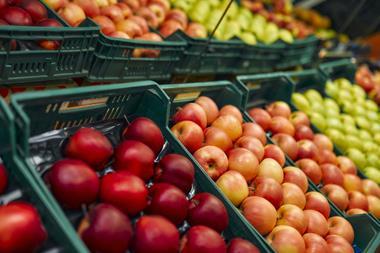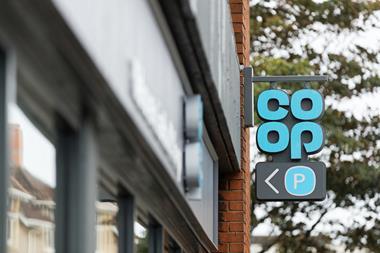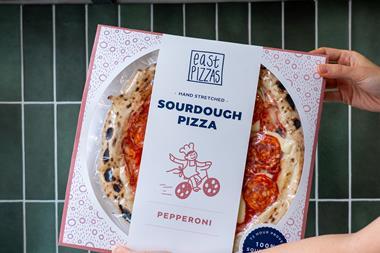Retailers can cash in on hungry consumers on the move with a food-to-go meal deal, writes Matt Chittock
Over the past five years meal deals have become a firm part of the food-to-go landscape. With big names such as Boots getting in on the act, customers are increasingly used to seeing a set of complementary products (most commonly a sandwich, drink and snack) bundled together for a reduced price.
With this in mind, retailers offering food to go who don’t bundle components together at a discount could be missing a trick - particularly as margins don’t have to take a huge hit.
“We’re seeing a lot of requests from retailers for pos to support value meal deals,” explains Stephen Clifford from Country Choice. “It isn’t about offering a massive discount - it’s about working out an appealing bundle of products that offers the perception of value while pushing up basket spend.”
Maximising meal deals means homing in on the meal occasions customers come in for most. According to Clifford, breakfast and lunch are the most popular for c-stores, although Nisa business manager Nick Slater recommends creating a dedicated offer for breakfast, lunch and dinner if a store can support it.
“You are wasting space if you leave a breakfast deal on 24/7,” he points out. “Use that same space from 10am to push a lunchtime offer, and after 2pm devote it to the evening offer.”
For retailers looking to focus on a single area of food to go, breakfast could be a good start since, according to research and consultancy firm HIM, more than half (55%) of consumers leave home without breakfast, and nearly a quarter (23%) actively demand a breakfast meal deal from retailers.
A bake-off often forms the core of a breakfast offer, with the experts advising offering hearty savoury baked goods at the core of a meal deal, or something sweeter like a muffin depending on your customers’ tastes.
“Hot breakfast baps - bacon bap, sausage bap and combinations thereof - have a core customer base of manual workers in general, with ‘white van men’ and builders being good examples,” says Clifford.
“Our research shows that these people don’t have breakfast at home, or make sandwiches for lunch - getting food-to-go is part of their lifestyle. These guys often do hard manual work - so they need plenty of carbs.”
Clifford says that hot drinks can be an important part of a morning meal deal, especially since the profit margins are relatively high.
“The typical retail price of coffee is £1.50 a cup. The cost of goods is about 20-30p, so you’ve got a nice margin to play with for bundling,” he says.
Of course, since the arrival of Starbucks and the like in the UK, customers are more discerning about what goes into their morning coffee - which means focusing on quality.
“If you’re doing food to go and don’t have a good bean-to-coffee offer then you’re crazy,” says Max Jenvey from Oxxygen Marketing Partnership. “It’s really easy to get the kind of quality and brand names which pull people off the street.”
Big names such as Costa can supply stores with upmarket vending machines to help retailers add cachet to their coffee offer. The Costa Express machine, which uses fresh milk rather than powdered to create a richer taste, is just one option available.
“Rather than adding to costs, installing a Costa Express machine can generate substantial income,” says Costa Express managing director Scott Martin. “A typical machine is installed and maintained by Costa Express and might generate more than £35,000 in annual revenue for a good volume location.”
The golden triangle
According to HIM, 56% of consumers say they would use a c-store for lunch. And if you’re building a meal deal, this typically means a sandwich, plus drink and a snack, or dessert.
Clifford says that according to Country Choice research, three out of four people looking for lunch in a store are after a sandwich. “It’s a massive category that just eclipses everything else,” he says. “You end up with so many sub-segments that it’s just about choosing what works for your store.”
Country Choice typically starts retailers off with eight different fillings for freshly-baked granary or white baguettes, covering the main sources of protein plus a vegetarian option. This selection covers all traditional sandwich choices.
Cusine de France can also help c-stores create a deli-style sandwich offer with fresh bread plus handheld savouries such as pasties, sausage rolls and slices. NPD like Indian vegetable slices can also be added from the Cusine de France range to combat what Jenvey calls ‘menu fatigue’.
And just like the coffee category there’s the chance to bring high street names in-store with franchises such as Subway.
“Subway has a number of products that combine well to create a meal deal, including crisps, cookies and dispensed and bottled drinks,” says Trevor Haynes, area development manager for Subway in the UK and Ireland.
“In many stores, shoppers can currently choose from a range of nine freshly made Subs and any medium drink for just £3, which is a fantastic offer.”
While breakfast and lunch tend to be the main meal deal occasions for c-stores, dinner could also be a winner. It just depends on the local competition.
“About 5pm or 6pm is the time that other food-to-go outlets such as fish and chip shops start opening up - so competition can be intense,” says Clifford.
“The choice really is down to individual stores. Clearly, if you’re next to a kebab shop then you could struggle with it.”
For stores that do opt-in, Country Choice can provide a range of food-to-go options including hot wedges and KFC-style chicken products. It also offers a pizza programme in which staff prepare pizzas during the day before serving them hot or packaging them for customers to heat up at home.
Also on the fast food front, Rollover offers units which steam hot dog sausages for customers to grab and go.
“You can turn the unit on in the morning and leave it on all day,” says Rollover sales manager Tony Owen. “A hot dog makes a good basis for a meal deal and we’re always up to talk to retailers about making it happen.”
As Slater points out, as far as meal deals go “evening must be built around a main course”.
“For evening offers, some consumers are looking for a full deal (eg dine in at £10 for two) - or it may be just ideas they’re looking for. In these cases meal solutions would fit the bill - for instance, grouping together mince, pasta, onions and tomatoes to make a spaghetti bolognese offer.”
Once you’ve worked out what meal occasions to invest in it’s important to promote your offer properly. The experts recommend that to achieve maximum returns, meal deal components should be merchandised together so they can be found easily by shoppers.
“Parasite units are good for offering crisps and snacks around sandwiches in the chiller so people can easily access the offer,” says Jenvey. “Alternatively, it’s fine to place crisps and other components of a meal deal in the chiller itself.”
He also maintains that it pays to keep things really simple when working out pos material.
“Go for really strong pos,” he says. “Something really simple, such as the images of products with plus signs between them and an equals at the end, works well. Some retailers are also highlighting the savings that you get buying products together.”
Jenvey also recommends that independents copy the big chains by making sure that till staff are knowledgeable in the deals on offer. That way staff can actively ask ‘Do you know that by buying a packet of crisps as well you can get the whole meal cheaper■


























No comments yet